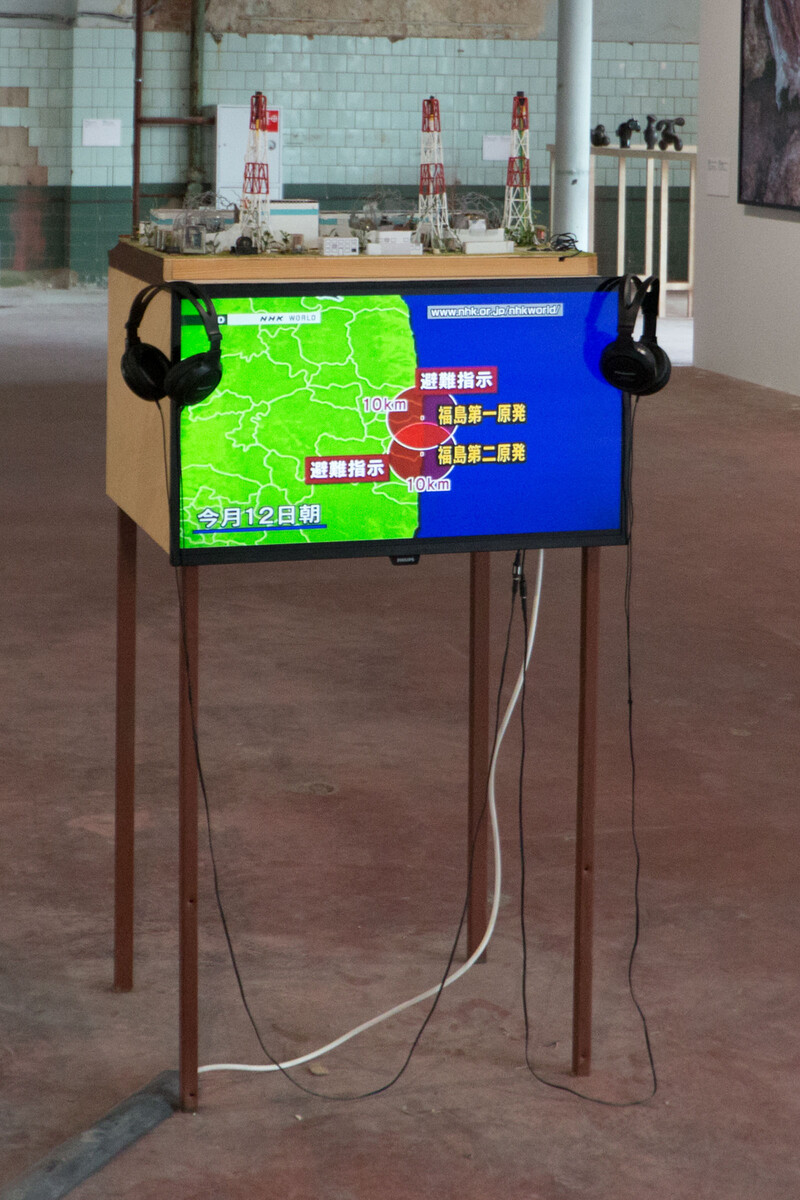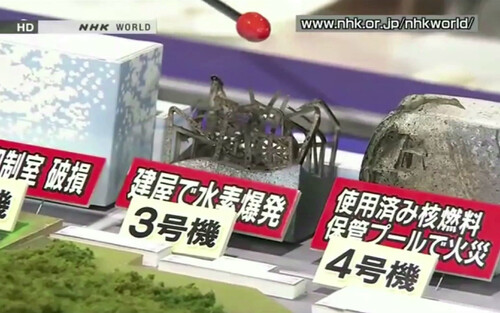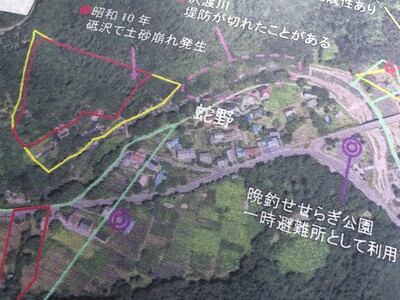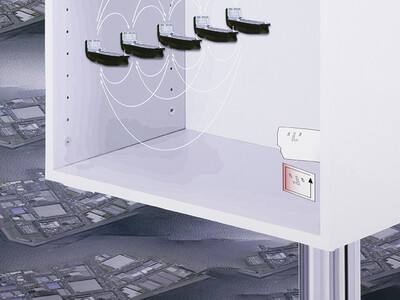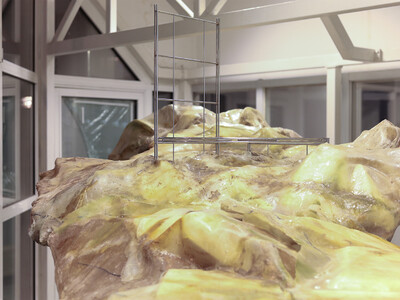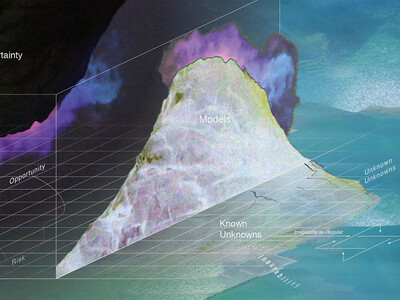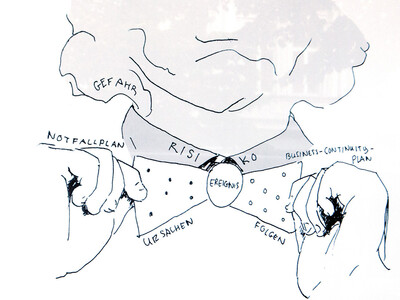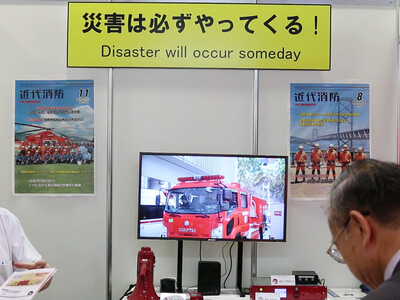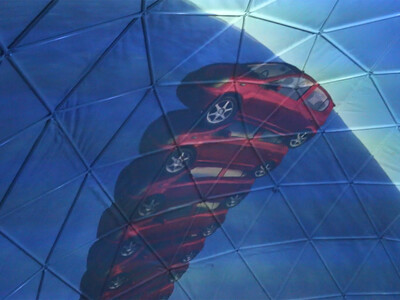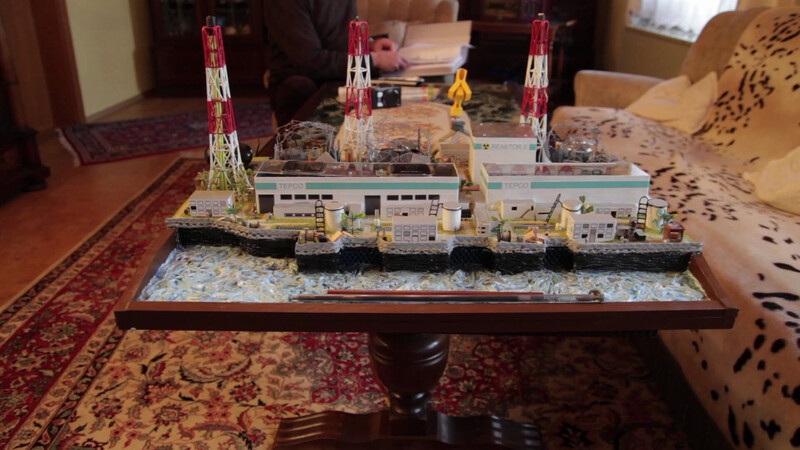
The Japanese TV news coverage of the 2011 Tōhoku earthquake, tsunami and the successional Fukushima Daiichi nuclear disaster featured a three-dimensional miniature model of the damaged power plant.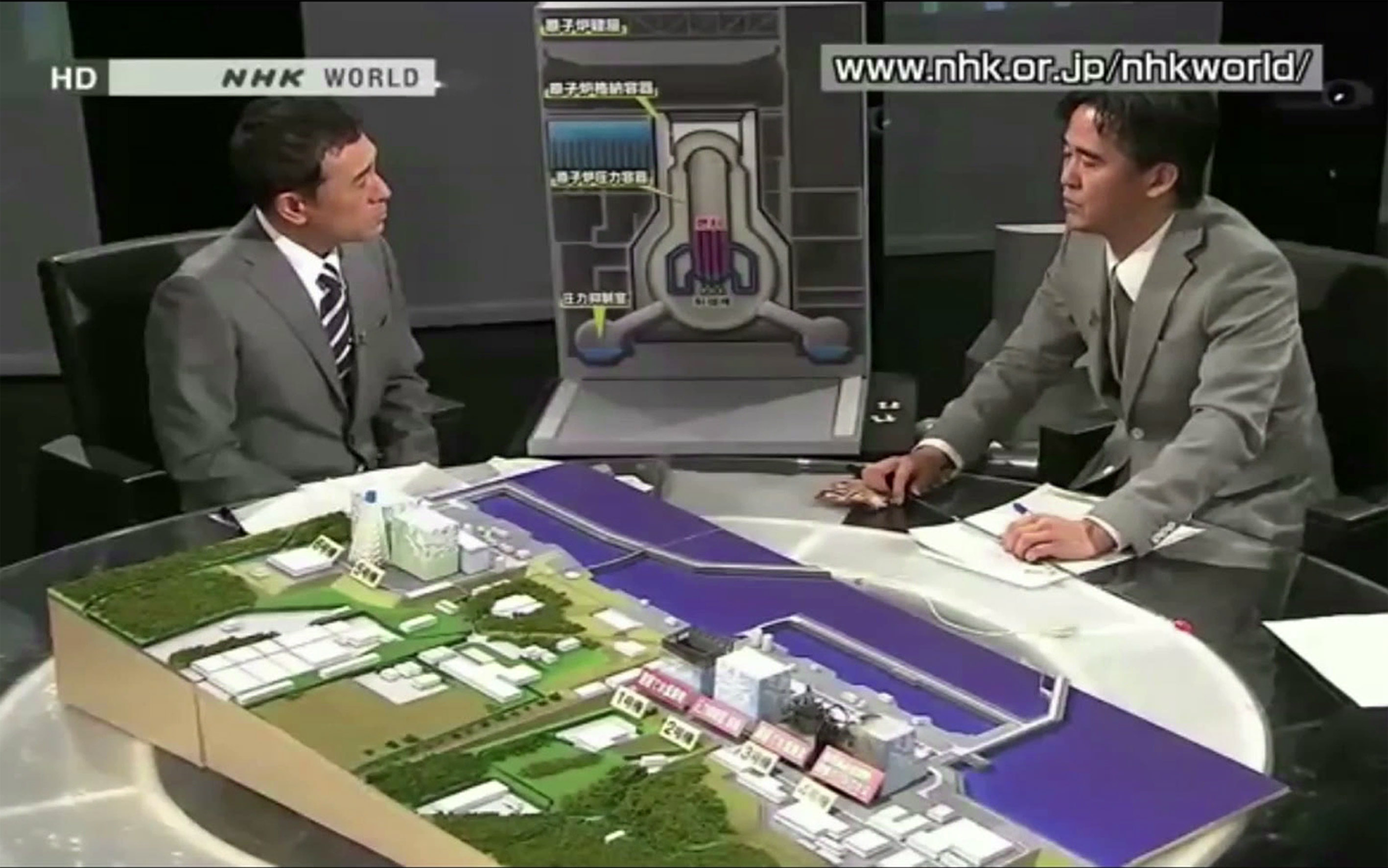 Live broadcast NHK World-Japan, March 14, 2011 (Screenshot: www3.nhk.or.jp/nhkworld). With the help of the model presenters, fire fighters and scientific experts explained dangers and mitigation measures taken at the plant, using miniature fire engines and helicopters. The model transformed according to alterations on site. The presenters’ and attendant experts’ experiencing and handling of the miniature on behalf of the viewer suggests that the depicted is somewhat controllable; that it can be handled.
Live broadcast NHK World-Japan, March 14, 2011 (Screenshot: www3.nhk.or.jp/nhkworld). With the help of the model presenters, fire fighters and scientific experts explained dangers and mitigation measures taken at the plant, using miniature fire engines and helicopters. The model transformed according to alterations on site. The presenters’ and attendant experts’ experiencing and handling of the miniature on behalf of the viewer suggests that the depicted is somewhat controllable; that it can be handled.
Following the events in Japan the German pensioner Herbert Winkler built a miniature model of the damaged power station in an effort to comprehend the succession of events on site. “To show to the young what actually happens when a nuclear power plant gets out of control,”From an interview with H. Winkler, recorded on February 26, 2013. said pensioner held lectures in local schools using his miniature model as a demonstration tool.
The project investigates the utilization of models as means of representing, communicating, commemorating, as well as predicting catastrophic events. The term catastrophe model suggests that a measure can be given to the catastrophic event despite its excessiveness, that it can be circumscribed, localized, and made tangible in a representation to scale. The excessive is contained by means of designation and design. It is allocated allegedly concrete coordinates and denominated in quantifiables.
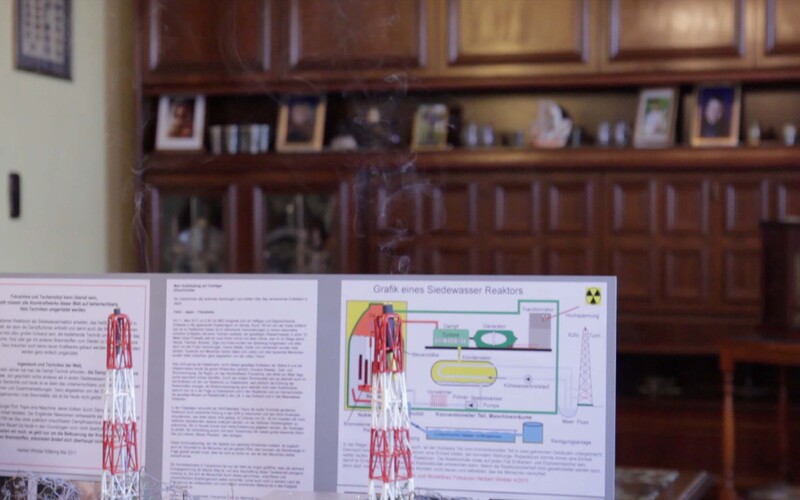
В новостных передачах, освещавших землетрясения 2011 года в регионе Тохоку, цунами и последовавшую за ними ядерную катастрофу в Фукусиме, японские телеканалы демонстрировали трехмерную миниатюрную модель разрушенной атомной станции.From an interview with H. Winkler, recorded on February 26, 2013. С помощью этой модели пожарные и ученые могли комментировать уровень опасности и принятые на станции экстренные меры. Модель менялась в соответствии с тем, что происходило на месте катастрофы. То, как телеведущие и эксперты обращались с моделью и представляли ее зрителям, заставляло думать, что с катастрофой можно справиться, что ее можно контролировать.
Немецкий пенсионер Герберт Винклер тоже создал миниатюрную модель разрушенной атомной станции. «Дабы показать молодежи, что именно случается, когда атомная станция выходит из-под контроля», пенсионер читал лекции в местных школах, используя свою миниатюрную модель в качестве демонстрационного материала.
Проект исследует применение моделей как средства репрезентации, коммуникации, увековечивания, а также предсказания катастрофических событий. Термин «модель катастрофы» предполагает, что катастрофа, сколь бы велика она ни была, может быть измерена, локализована и изучена с помощью масштабирования. Огромное становится измеримым посредством обозначения и конструирования, ему придаются фактически конкретные координаты и количественные показатели.
